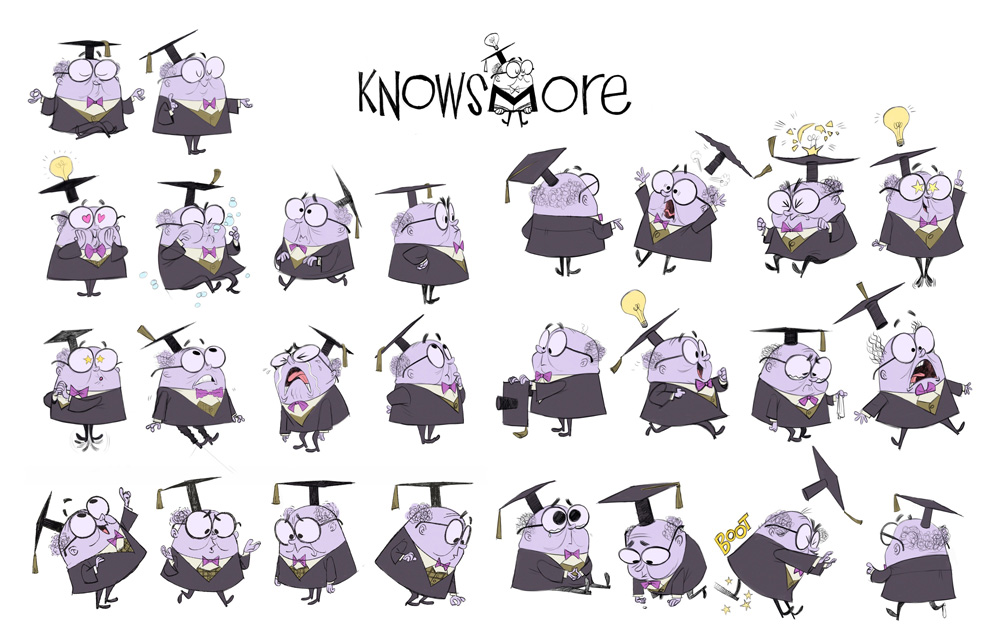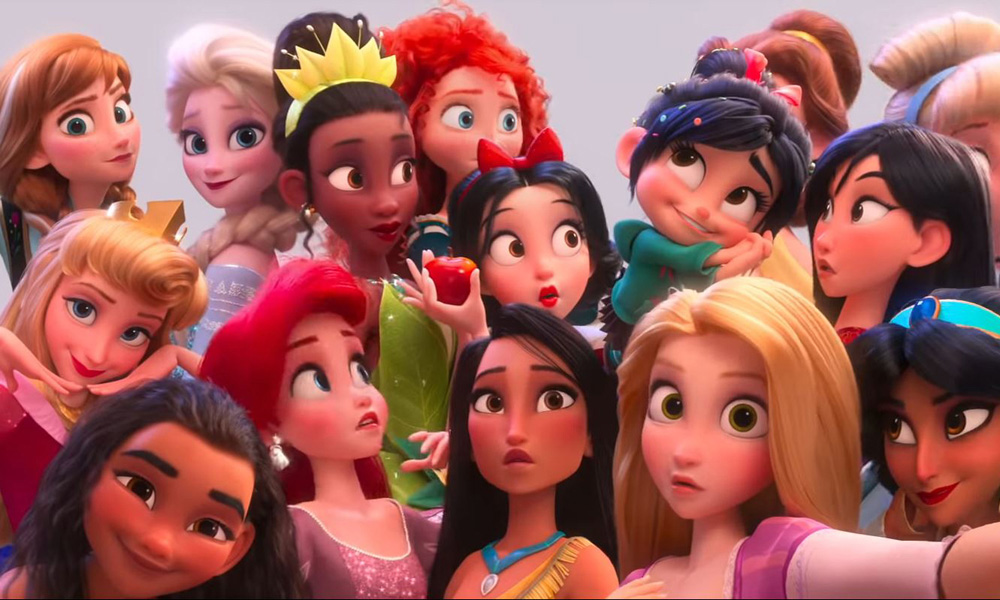***This article originally appeared in the November ‘18 issue of Animation Magazine (No. 285)***
Having celebrated its 95th anniversary this year, Walt Disney Animation Studios boasts almost a century’s worth of experience in drawing audiences into the magical worlds dreamed up by its legion of in-house animators. But Ralph Breaks the Internet, the studio’s 57th animated feature and a sequel to 2012’s box-office-wrecking Wreck-It Ralph, is possibly its most challenging since Walt himself oversaw the completion of Snow White and the Seven Dwarfs in 1937.
At first glance, the CG-animated, tech-themed film is about as far from the pastoral landscapes of Snow White as you can get (although — spoiler alert — the raven-haired Disney princess does in fact make a cameo), but both features are, in their own way, pioneers. As was the case for Walt on Snow White, there was no cinematic blueprint for what directors Rich Moore and Phil Johnston set out to depict in Ralph Breaks the Internet, which sees the eponymous loveable oaf reunited with adorable gal-pal Vanellope von Schweetz on another high-octane, high-fructose adventure, this time in the sprawling metropolis of the World Wide Web.
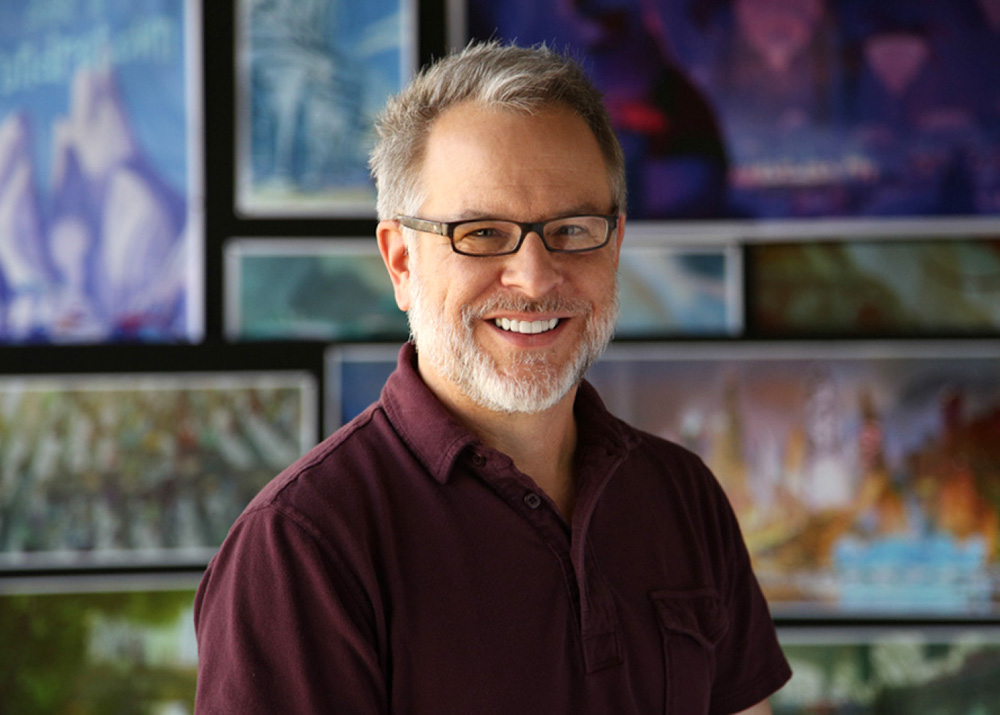
Despite the profound effect the Internet has had on the world since it was launched to the public in 1983, it has never been depicted on screen before in any tangible way. “We did actually have a board of all the cities that we could find in sci-fi movies,” recalls art director Matthias Lechner, who was one of the first members of crew to come on board the film. “And the directors told us not to do any of that. It wasn’t supposed to read as a sci-fi city, because it’s the Internet.”
Given the size and scope of the Internet, not to mention that in the four years between conceiving the film and releasing it the web has morphed in ways no one could ever have anticipated, the film’s premise presented not only a conceptual challenge but a practical one as well, both in terms of the number of assets that needed to be created — from the 150,000 characters that populate the city to the endless buildings, signs, holograms and videos of which it’s comprised — and in rendering them through the studio’s in-house rendering software Hyperion. One scene, in which Ralph and Vanellope (voiced again John C. Reilly and Sarah Silverman) enjoy a balcony view of the city, consisted of over 100,000 individual elements.
Among the most laborious locations to bring to life was “Buzztube,” a YouTube-inspired website shaped like a tall, cylindrical room stacked top to bottom with video monitors, each playing a clip that had to be individually animated. “We enlisted the entire art department in the building to help with the design of all of these screens,” explains technical supervisor Ernie Petti. “Not just the people who were on the [film] but basically everyone in the building.”
As for rendering, initially just the scale of the city’s architecture proved insurmountable for Hyperion. “It wasn’t happy,” Petti recalls of the environment team’s first test. “The test never came back. So we had to go back and figure out: How do we actually make an Internet city at the scale that we need to, but efficiently enough that we can still work with it in all departments and finish the movie on time?”
But before the team could begin constructing a workable model of the Internet, they had the equally daunting task of deciding what it should look like. Production designer Cory Loftis was one of the first crew members to join the project, shortly after wrapping on Zootopia. Loftis, who was brought on by producer Clark Spencer, was asked to “Start coming up with ideas for the Internet,” he laughingly recalls. “Matthias had started just before me, and I was like, well, what did Matthias say? And [Spencer] replied, ‘Well, Matthias said we can’t do it.’”
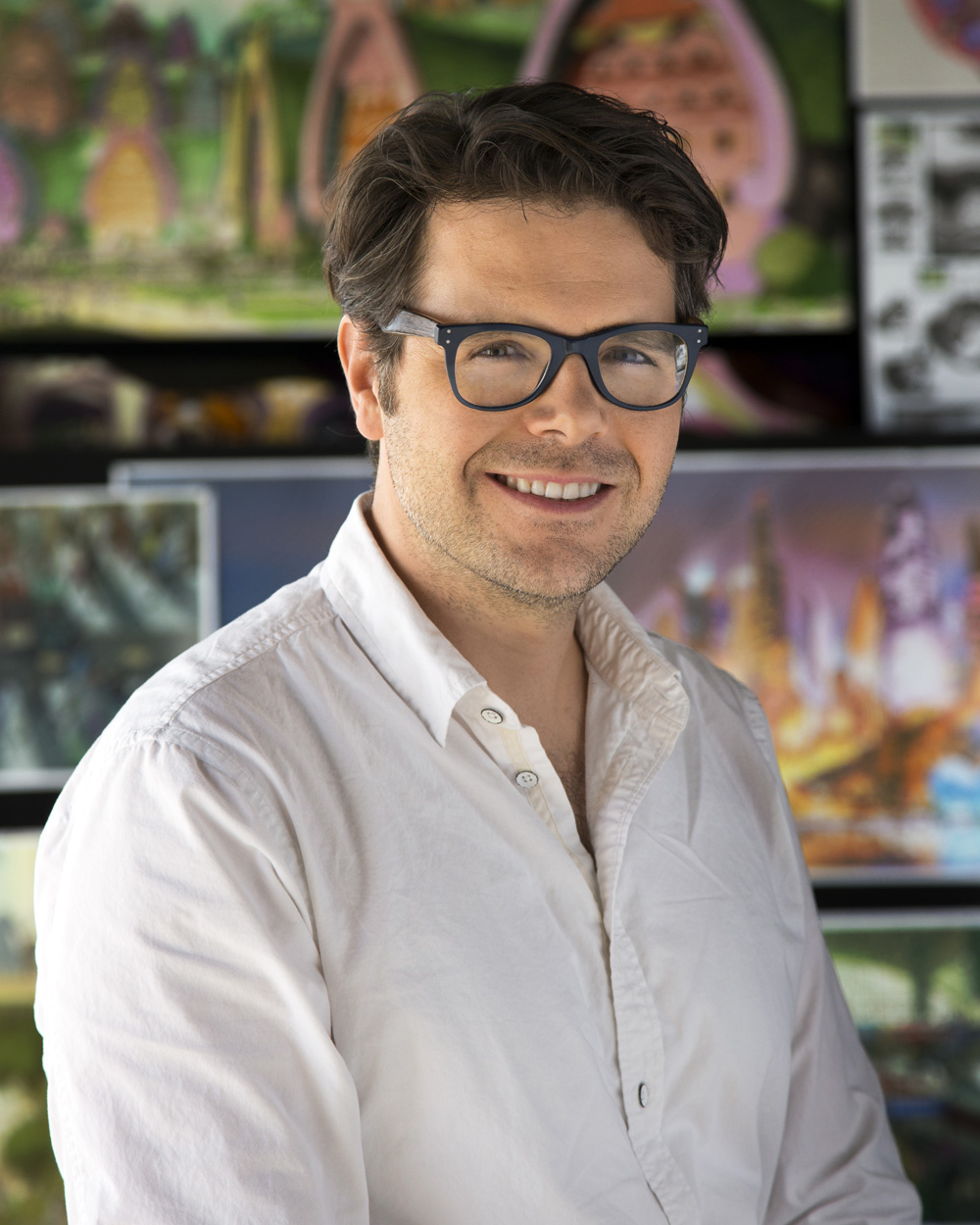
Lechner concedes his initial outlook was somewhat pessimistic. “My first thought was, that’s a fantastic idea,” Lechner explains. “Because it actually makes sense, logically, to the story and it kind of multiplies the possibilities. And then I realized what it means.” What it meant was visually conceptualizing one of the most intangible, powerful technological developments in modern history. “And the scary part is that people have preconceived notions of the Internet,” Lechner adds. “Everybody has ‘their Internet,’ you know.”
For director Rich Moore, the experience of depicting the Internet on screen for the first time was “horribly daunting,” he admits. “There is no touchstone to go to. There is no reference point to draw from other than what you see on a screen on a computer or your phone, and that’s it.”
“It was very uncomfortable for a long time,” he says. “And we just had to sit in that discomfort and push through, knowing that eventually it would kind of crack open and reveal itself.”
The result is a luminous megalopolis (think Tokyo on high-fructose corn syrup) imbued with a plethora of thoughtful details that make the Internet feel both satisfyingly fresh and strangely familiar. In one scene, Ralph and Vanellope hop down a bank of escalators travelling at different speeds, which represent bandwidth, while eagle-eyed viewers might notice the city’s clocks are actually loading wheels. Meanwhile, eBay is depicted as an enormous hangar full of thousands of individual auction booths, peppered with props from past Disney animations — although that was as much out of necessity as a desire to please fans, given the number of assets that needed to be created in such a short span of time.
There is even a brief sojourn down to the Dark Web, via an elevator, in which Ralph gets a glimpse of the underbelly of the Internet. Because while director Phil Johnston likes to quip that, based on the animation team’s initial research, “the Internet is apparently nothing but cat videos,” but there was also a philosophical aspect to the project that was impossible to ignore. “We talked a lot about where we are as a people in regard to this technology,” he says. “We are in the midst of something that has so rapidly outpaced our ability to understand what it is. What is social media? What is this technology? Morally, ethically, how do we behave with regard to it in our lives?”
Although it would be unfair to expect a family film to provide answers to questions that academics and politicians are still grappling with, Johnston and Moore have admirably decided to tackle the darker side of the web head-on with a sub-plot about cyber-bullying. “We felt we had a responsibility to talk about those things that are complicated on the Internet,” Moore admits. Johnston explains they felt “emboldened” by their work on Zootopia. “Knowing that audiences are OK and actually eager for a more sophisticated kind of approach in family films to tricky subject matter.”
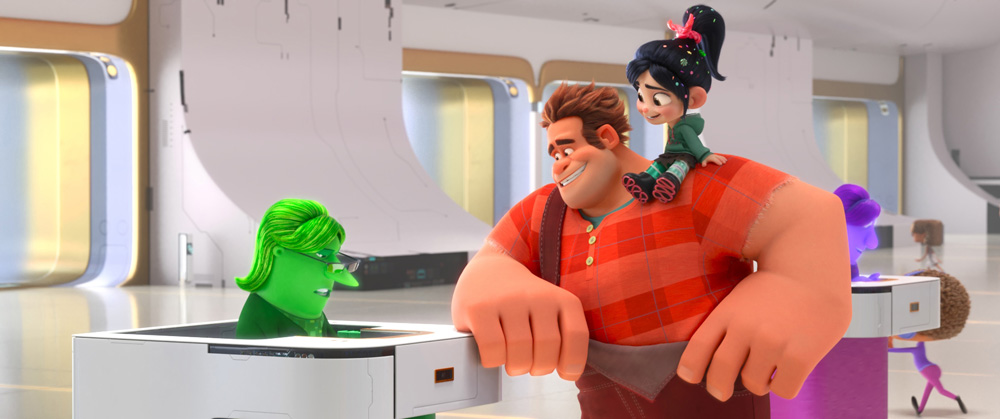
While the duo were acutely aware that the film’s premise means it will, in years to come, become a time-capsule of sorts, they were equally focused on ensuring the friendship between Ralph and Vanellope remained as compelling as it was in the original Wreck-It Ralph. “It’s neat that the Internet of 2018 will be represented there,” says Johnston. “[But] I hope there are even more universal truths — the way friendship works and the way people love each other and how kindness can be shared with one another. I hope those are the longer-lasting things.”
Disney’s Ralph Breaks the Internet opens in theaters nationwide on November 21.
Disney Princesses: They’re Complicated!
There’s nothing the Internet loves more than a Disney Princess — a quick search online generates thousands of fan-inspired homages ranging from hipster versions to cosplay — but Ralph Breaks the Internet co-writer Pamela Ribon admits that when she first conceived of the princess scene that went on to “break the Internet” after it debuted at the 2017 D23 Expo, she thought she might get fired.
“As we were talking about all the different parts of the Internet, [we thought] you’ve got to do something meta, and wouldn’t it be fun to have Disney kind of poking fun at itself a little bit,” Ribon recalls. “And we thought, well gosh, if Vanellope met all the Disney Princesses and took a selfie with them, that might break the Internet. And then I was like, ‘Well, I’ll get my feminist agenda on this.’”
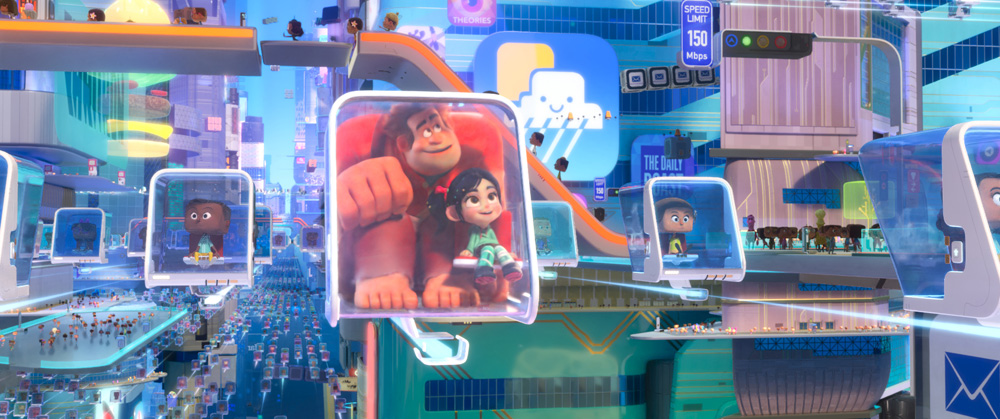
Ribon’s efforts paid off with a scene that, unsurprisingly, swiftly went viral. For not only did it feature 14 princesses in one room for the first time, but it also involved Disney gently lampooning its own, much-beloved characters. Snow White, for example, explains that her dramatic hand gestures in the 1937 film were because she’s “legally blind” while Cinderella breaks her glass slipper on a chair before menacingly brandishing it at Vanellope.
“It felt like, if everyone else does it, why shouldn’t we?” Moore says of the scene’s cheeky humor. “And we could do it better than other places because those are our characters, we know them intimately.” In some ways, of course, that made the job more difficult. Even after the animatic won approval from everyone at the studio — including some of the very directors who had helmed Disney princess films — the next challenge was making the princesses look both authentic and cohesive, despite their vastly different animation styles and hand-drawn/CG-animated disparities.
Even so, both cast and crew were enthusiastic about the scene. Head of characters and technical animation Dave Komorowski confirmed that the princesses were “the most requested shots” among the character team. Similarly, all the living original voice actresses agreed to revisit their animated royal alter-egos, providing voices for the film and also consulting with the animators on how their characters might speak and act.
“We sent them the sides so everyone knew kind of what the scene was like,” Moore recalls. “And we thought, well, we hope everyone’s game to do something that’s part irreverent, but respectful of their characters at the same time and every single actress that we went to loved the idea.”
Incidentally, in September, Disney had to take another pass at the CG depiction of Princess Tiana (The Princess and the Frog) in the movie, after wide social media backlash and criticism to the character’s lightened skin tone and hair style noticed in early images and movie clips.
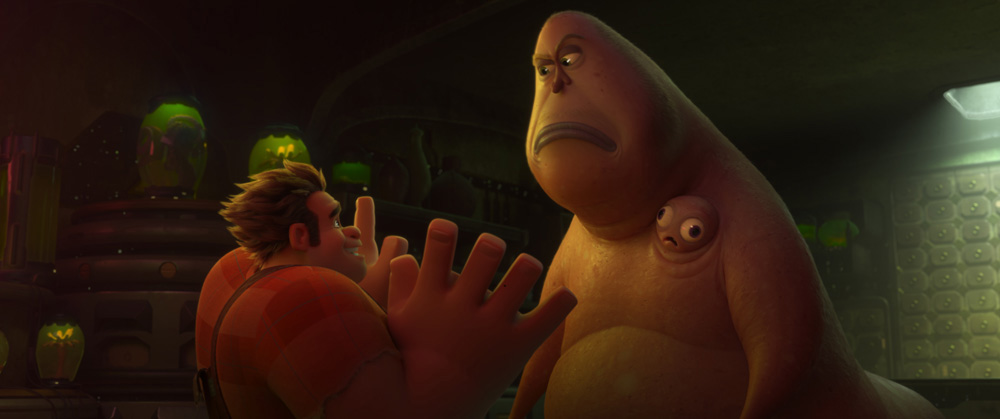
KnowsMore Knows All
Ralph Breaks the Internet features a nod to Walt Disney Animation Studio’s hand-drawn history with KnowsMore, an anthropomorphic search engine character with huge, owl-like glasses. “[His eyes] are just sort of round dots, but the amount of expression that they needed to go through was highly complicated,” explains head of animation Renato dos Anjos. “So we decided the best way of approaching that was to hand draw the eyes on him.”
In earlier versions of the movie, KnowsMore played a bigger role in the story: He was a broken search engine that was sentenced to prison because of his malfunction, and joined Ralph on his search for Vanellope. Voiced by the always versatile and talented Alan Tudyk, who also starred as King Candy in the first movie, KnowsMore is a combination of 2D and CG animation. His body is CG, but his glasses and eyes are hand-drawn using Disney’s Meander. The character was initially conceptualized as an owl!
